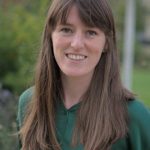Keynote speakers
Stefan Hell
Winner of the 2014 Kavli prize for Nanoscience, and joint Nobel prize winner in Chemistry, 2014, for the development of STED (STimulated Emission Depletion) microscopy, the first light-focusing microscope with a resolution at the nanoscale. Stefan Hell and his team have shattered Abbe’s diffraction-limited resolution barrier, which was long regarded an absolute limit.
Recently, a fresh look at the basic physical principles underlying nanoscopy has spawned more new concepts. In particular, MINFLUX imaging (nanoscopy with MINimal photon FLUXes) has been pioneered in the Hell Labs, obtaining the ultimate (super)resolution: the size of a molecule (~1 nm), which is now used to create unprecedented measurement capabilities for the life sciences and beyond.
Read more at: https://nanobiophotonics.mpibpc.mpg.de/

Max Planck Institute for Multi-disciplinary Sciences Göttingen & Max Planck Institute for Medical Research, Heidelberg, Germany.

Lund Attosecond Science Center/Division of Atomic Physics, Department of Physics, Lund University, Sweden.
Anne L’Huillier
Jointly winning the Wolf Prize in Physics 2022 correctly predicted a well-deserved Nobel Prize win in 2023 for experimental methods that generate attosecond pulses of light for the study of electron dynamics in matter. Anne L’Huilier and her group have been at the forefront of creating laser sources with shorter and shorter pulses – now down to tens/hundred of attoseconds – with an ultimate goal of studying fundamental quantum phenomena in matter.
Her research spans both the theoretical aspects of ultra-short light beams, pulse shaping and higher harmonic generation, as well as diving into the practical aspects of combining attosecond laser pulses with high output power and subsequently using them for (pump-probe) photelectron spectroscopy and imaging techniques. In fact, one of the current projects is exploring the creation of a ‘high-intensity XUV beamline’ allowing the study of non-linear phenomena in atoms. A development that is reminiscent of how femtosecond FEL sources created new, complementary time-resolved tools with respect to ‘continuous’ synchrotrons beams.
Invited speakers

Volker Rose
Argonne National Laboratory (ANL) | USA
Advanced Photon Source (APS)
Topic: achieving atomic resolution with soft-x-ray STM-STXM

Claire Donnelly
MPI for Chemical Physics of Solids | Dresden | Germany
Lise Meitner research group, Spin 3D Topic: X-ray magnetic imaging with laminography

Jumpei Yamada
Osaka University | Japan
Department of Precision Engineering
Topic: advanced Kirkpatrick-Baez mirrors with ultra-focus

Marie-Ingrid Richard
CEA Grenoble | France
ESRF synchrotron
Topic: in situ/operando electrochemistry in coherent diffraction imaging


Kaye Morgan
Monash University, Melbourne| Australia
School of Physics and AstronomyTopic: medical phase contrast and dark-field imaging

Tilman A. Grünewald
Institut Fresnel Marseille | France
Coherent Microscopy and X-rays (COMIX)
Topic: multi-scale and multi-modal x-ray imaging on bones and biominerals

Henning Friis Poulsen
Technical University of Denmark | Denmark
Department of Physics
Topic: outlook on multiscale 3D X-ray imaging & characterization with hard X-rays